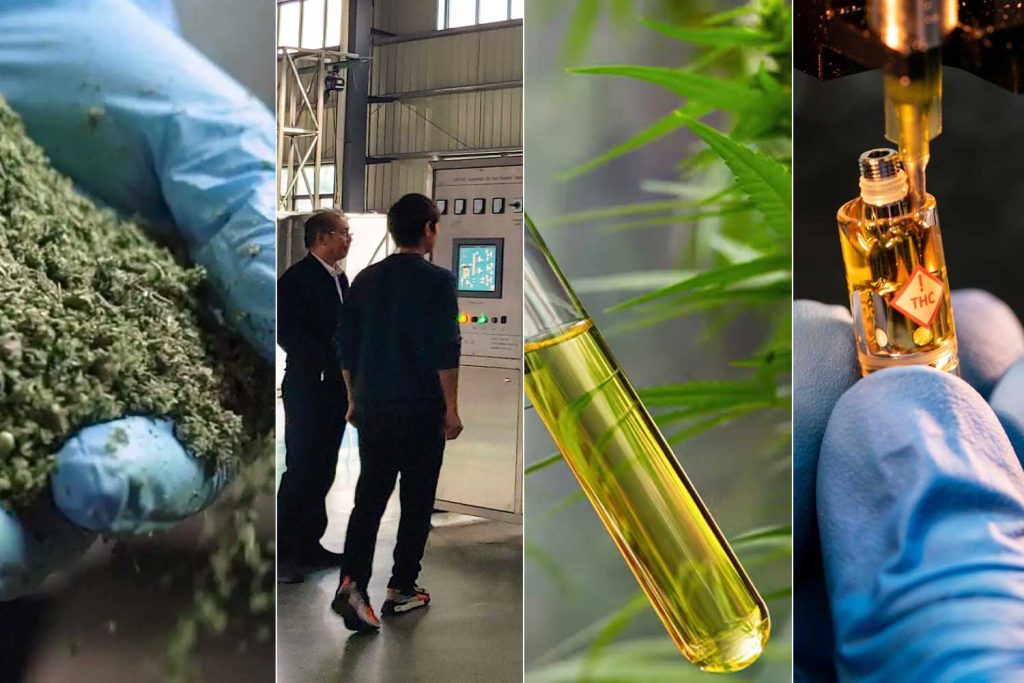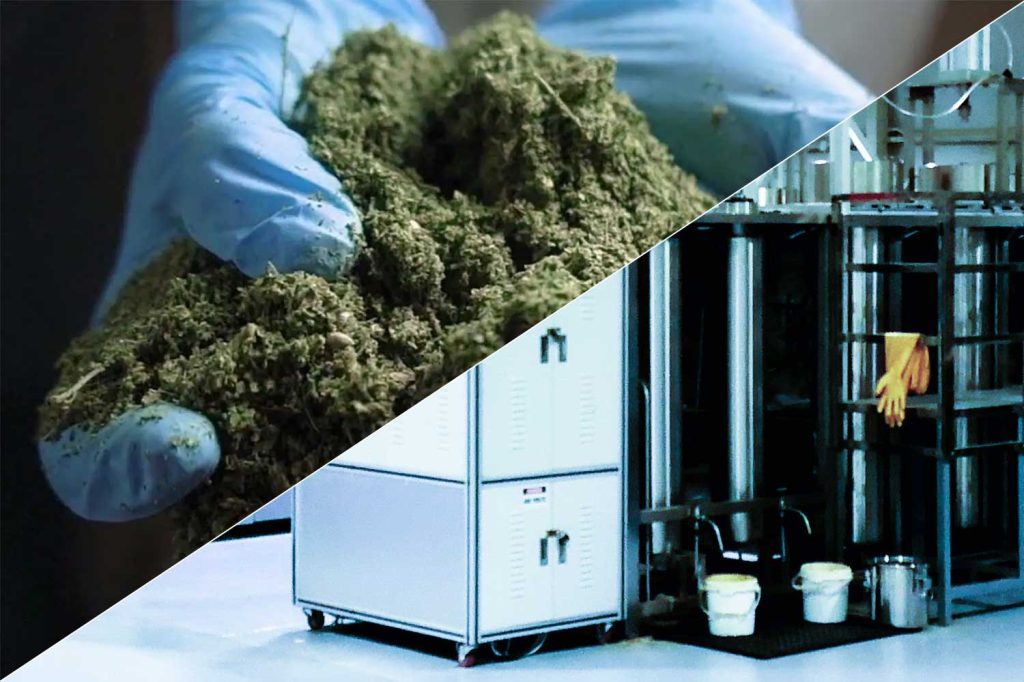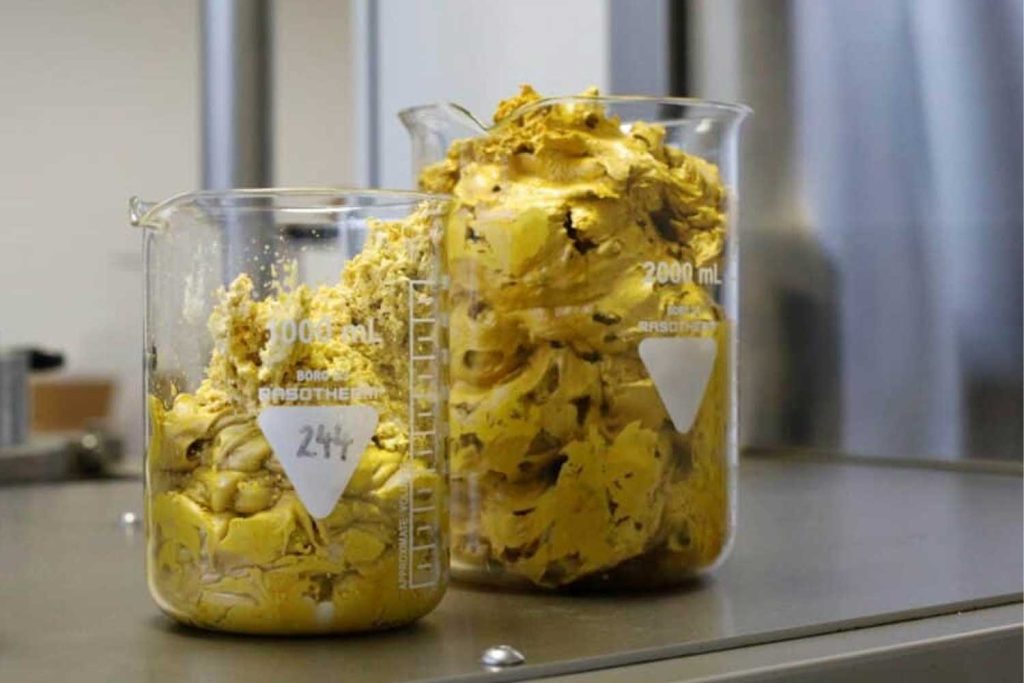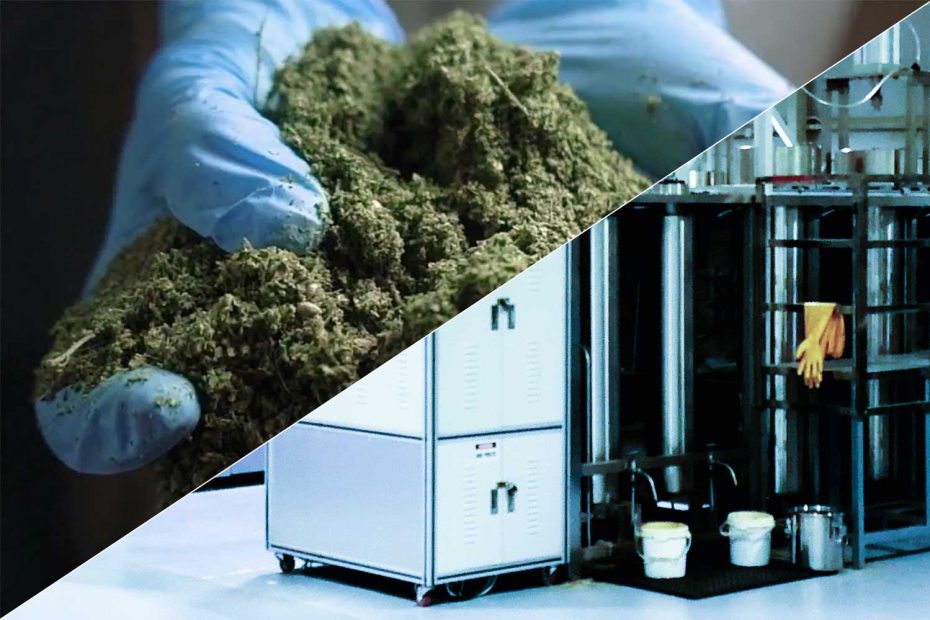Why Produce CBD Oils or Cannabis Extracts?
CBD is one of the many compounds found in the cannabis plant. Extracting CBD oil from industrial hemp plants is one of the fastest-growing, most stable, and value-added segments of the broader cannabis industry. Science is just beginning to uncover the medicinal benefits of this cannabinoid, and findings thus far are promising. Over the last few years, cannabidiol has become so popular that it is now being extracted and produced, extraction allows manufacturers to transform hemp or cannabis biomass into bulk ingredient essential oils, waxes, cannabinoids, terpenes, crystals, or distillate oil. These high-quality oils are then transformed into novel food ingredients, supplement active ingredients or additives in cosmetics. CBD oils are typically available in CBD pills, water-soluble formulations, tinctures, and edibles.



CBD oil is especially popular. It is used to treat a host of illnesses and works by interacting with the endocannabinoid system (ECS) without providing users with a ‘high’.
CBD oils make up a major portion of retail sales. In their recent study, The World Health Organization showed that CBD has a great safety track record and has a limited number of adverse events. The report notes that there has been no evidence of any public health-related problems associated with the use of purified CBD. The report did review several therapeutic applications and benefits of CBD oil on the endocannabinoid system. According to the report, hemp oil benefits include aiding in skin conditions to mitigating forms of epilepsy and multiple sclerosis.
What Is the Optimization Method for Extracting CBD?
There are several ways to extract CBD oils from hemp. The most popular methods use supercritical CO2 or ethanol to dissolve cannabinoids that are in the resinous plant trichomes, leaving the undissolved plant material to be discarded as waste.
Many cannabis experts agree that the CO2 extraction method is the optimization for producing a high-quality oil that stays potent longer, supercritical CO2 extracts to be cleaner and safer than ethanol derived oils for the following reasons:
Purity
Ethanol extracts carry with them known and unknown risks related to prolonged and repeated exposure to unnatural denaturant chemicals, that are added to pure ethanol to make the extraction method affordable. Although these chemicals are often removed to “safe” levels, they are not fully removed from extracts. The remaining solvent contaminants are called chemical residuals by the FDA and must be controlled and tested because the residuals have “no therapeutic benefit” and in some cases are toxic or carcinogenic at high levels.
Why is SCF CO2 better than Ethanol Extraction?
Testing using invalid test methods
A partial list of common denaturants include: acetone, isopropyl alcohol, hexane, hexanes, heptane, butanol, methyl tertiary butyl ether. Testing for “safety” is required but residuals are not always measured in hemp extracts with validated test methods considering the specific denaturant mixture used in extraction. Rather, a generic solvent method is typically employed. This means the risk of missing a major potential contaminant is highly increased.
Unknown risk of negative health consequences
Health dangers of such additives are well documented but only partially understood in the context of cross factors including age, health, drug interactions, effects on the brain and cognitive & emotional function, and susceptibility to negative health consequences. Despite all the years of research, more research investigating the long-term solvent exposure in humans is needed to accurately assess risk. Due to these reasons, the healthy, natural CBD you expect from hemp may not be so healthy.
Summary
CO2-derived hemp and CBD oils are widely regarded as the highest quality, chemical residue-free oils produced. CO2 extraction has advantages over ethanol as the extraction media is on many different levels. Drastically lower operating costs are a key benefit of CO2 extraction. Over time, lower operating costs accumulate and continue to build value throughout the life of the equipment.
For the company and consumers alike, CO2 extraction is the optimization possible method of extracting CBD. It is completely safe and creates very little waste for the company producing it. CBD extracted this way is going to be the purest it can possibly be and contain no harsh chemicals or contaminants. When you’re looking for CBD products for yourself, you should look for companies that extract their CBD in this method. Reputable companies all list their extraction method on their site so you can be sure you’re getting the optimization possible products.
HOW TO GET THE BEST CO2 CBD OIL EXTRACTION PROCESS?
4 Extraction parameters of CBD oil CO2 extraction process
Extraction parameters will determine not only the type, quality, and yield of a cannabis extract, but also the ease and cost of the extraction process.
Supercritical co2 extraction cannabis (weeds) typically choose to start parameters in the 45-60 deg C range and pressures ranging from 3000 to 5000 psi range and then run trials for their particular feedstock and desired final product.
Once the desired extract for the specific feedstock, the experiment is to find the appropriate flow rate to facilitate processing (as quick as possible without icing up, clogging lines, or causing channeling).
Finally, look at solvent-to-feed rates to balance out the completeness of the extraction (yield) versus the extraction time/solvent cost.
Pressure
- From the initial chosen extraction pressure, increasing pressure increases wax/resin concentration in the extract
- Pressure over 5000 psi at 45 deg C causes chlorophyll extraction,
- Increasing pressure increases chlorophyll in the extract
- Increasing temperature increases chlorophyll in the extract
- Higher pressures are harder to maintain if CO2 supply is not continuous (cylinders instead of bulk)
Flow rate
Maintaining flow rate at higher pressures is more difficult due to a loss of CO2 supply (especially when using tanks and the cylinders are emptying).
Increasing flow rate can cause dry ice accumulation, resulting in a higher chance of icing up lines unless additional heat is applied.
Decreasing flow allows for the material to be in contact with the solvent for longer, increasing potential yield.
Decreasing flow slows processing.
Solvent-to-feed ratio
This is a processing time/solvent cost versus extract quantity amount issue. The correct ratio is the one that is most cost-effective.
CONCLUSION
Ultimately, the selection of extraction parameters is a balancing act: product quality vs quantity, processing time vs yield, and the overall cost to produce the product. The four parameters discussed are the main ones that our customers use to fine-tune their processes.
